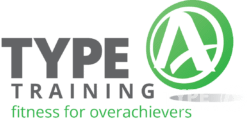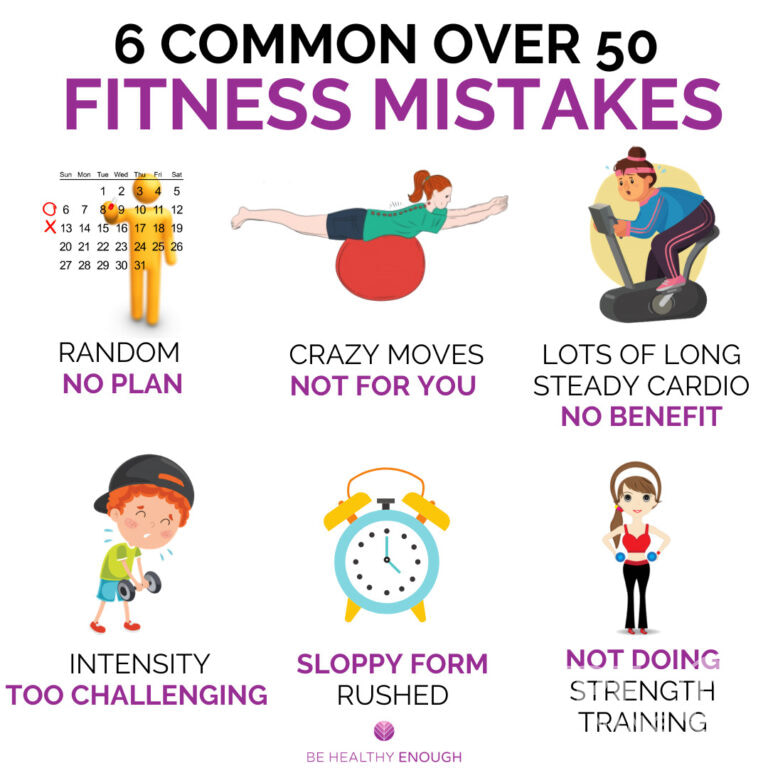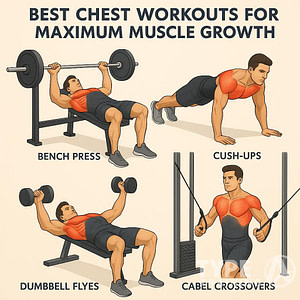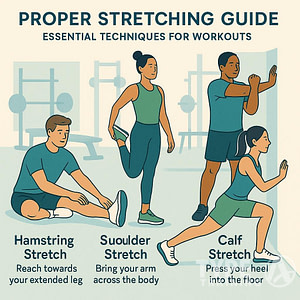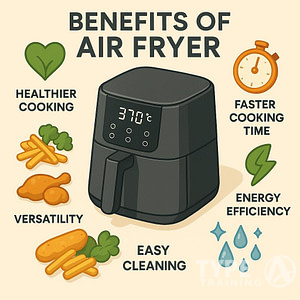Strength training is an excellent way for women over 50 to improve their health and fitness. While many women may feel intimidated by the idea of lifting weights, the benefits of strength training are numerous. Not only can it help you build muscle and increase bone density, but it can also improve your balance, reduce your risk of injury, and boost your metabolism.
Understanding strength training is key to getting started. Strength training involves using resistance to work your muscles, which can be done through a variety of exercises such as weightlifting, resistance bands, or bodyweight exercises. It is important to start with a weight that is challenging but manageable and to gradually increase the weight over time. It is also crucial to use proper form to avoid injury.
If you are a woman over 50 who is new to strength training, it is important to take potential risks and precautions into consideration. You should consult with your doctor before starting a new exercise program, especially if you have any pre-existing medical conditions. Additionally, it is important to listen to your body and rest when needed to avoid overexertion or injury.
Key Takeaways
- Strength training can improve your health and fitness as a woman over 50.
- Understanding strength training and proper form is crucial for getting started.
- It is important to take potential risks and precautions into consideration and to consult with your doctor before starting a new exercise program.
Understanding Strength Training
Popular posts:
Strength training is an essential part of any fitness routine, especially for women over 50. It involves using resistance to build muscle mass and improve muscle strength. Some common forms of strength training include weight training, resistance training, and bodyweight exercises.
Strength training has numerous benefits, including increasing bone density, improving balance, and reducing the risk of injury. It can also help you maintain a healthy weight and improve your overall quality of life.
When starting a strength training program, it is essential to start slowly and gradually increase the intensity and frequency of your workouts. It is also important to seek help from a personal trainer or fitness professional to ensure you are using proper form and technique.
In addition to traditional strength training exercises, incorporating yoga and Pilates into your routine can also be beneficial. These practices can help improve flexibility, balance, and core strength, which can all contribute to overall strength and fitness.
Remember, strength training should be a part of a well-rounded fitness routine that includes cardiovascular exercise and proper nutrition. With dedication and consistency, you can improve your strength and overall health at any age.
Benefits of Strength Training for Women Over 50
Strength training is an excellent way for women over 50 to improve their overall health and fitness. Here are some of the benefits you can expect:
Strengthens Bones and Improves Bone Density
Strength training can help to increase bone density, which is crucial for women over 50, as bone density tends to decrease with age. This can help to prevent osteoporosis and other bone-related conditions.
Improves Muscle Mass and Lean Muscle Mass
Strength training helps to build and maintain muscle mass, which is essential for overall health and fitness. It can also help to increase lean muscle mass, which can help to improve your metabolism and burn more calories.
Improves Balance and Coordination
Strength training can help to improve your balance and coordination, which can help to prevent falls and other injuries. This is especially important for women over 50, as falls can be more dangerous and lead to more severe injuries.
Improves Mobility and Flexibility
Strength training can help to improve your mobility and flexibility, which can help to keep you active and independent as you age. It can also help to prevent injuries and improve your overall quality of life.
Reduces the Risk of Heart Disease and Lowers Blood Pressure
Strength training can help to reduce your risk of heart disease and lower your
SWOT Analysis
| Strengths | Weaknesses |
|---|---|
| Improves bone density and reduces the risk of osteoporosis | Can be intimidating for beginners |
| Increases muscle mass and lean muscle mass | Can be challenging for those with certain health conditions |
| Improves balance and coordination | Requires access to equipment or a gym |
| Improves mobility and flexibility | Can be time-consuming |
| Reduces risk of heart disease and lowers |
| Opportunities | Threats |
|---|---|
| Can improve overall health and fitness | Risk of injury if not done correctly |
| Can increase social connections through group classes | Can be expensive if using a personal trainer or gym membership |
| Can help to maintain independence and quality of life as you age | Can be difficult to stay motivated |
| Can be adapted to individual needs and abilities |
Overall, strength training is an excellent way for women over 50 to improve their overall health and fitness. With the right guidance and equipment, it can be a safe and effective way to maintain muscle mass, bone density, and overall mobility as you age.
Potential Risks and Precautions
While strength training can have numerous benefits for women over 50, it is important to be aware of potential risks and take necessary precautions to prevent injury.
Pain and Injury
It is common to experience muscle soreness and fatigue after strength training, but if you experience sharp pain or discomfort during exercise, it is important to stop immediately. Overexertion or improper form can lead to injuries such as strains, sprains, and even fractures.
To prevent injury, make sure to use proper form and technique when performing exercises and start with lighter weights before gradually increasing the intensity. It is also important to listen to your body and rest when needed.
Joints and Arthritis
If you have joint pain or arthritis, it is important to consult with a doctor before starting a strength training program. Certain exercises may exacerbate joint pain, while others can help improve joint mobility and reduce pain.
Low-impact exercises such as swimming or cycling can be a good alternative to high-impact exercises like running or jumping. It is also important to warm up properly before exercising and to stretch after to prevent stiffness and soreness.
Recovery
Allowing your body time to recover is crucial for preventing injury and maximizing results. Aim to take at least one or two rest days per week and avoid working the same muscle groups on consecutive days.
Getting enough sleep and proper nutrition can also help with recovery. Make sure to eat a balanced diet that includes protein to help repair and build muscle tissue.
Doctor’s Approval
Before starting any new exercise program, it is important to consult with a doctor, especially if you have any underlying health conditions or concerns. They can provide guidance on what exercises are safe and appropriate for you.
In conclusion, while there are potential risks associated with strength training for women over 50, taking necessary precautions and consulting with a doctor can help prevent injury and maximize benefits.
Getting Started with Strength Training
Strength training is an excellent way to stay healthy and fit, especially for women over 50. Before starting, it is essential to understand the basics of strength training to make the most out of your workouts. Here are some tips to get you started:
Form
Proper form is crucial when strength training. It helps you avoid injuries and ensures that you are targeting the right muscles. If you are new to strength training, consider working with a personal trainer. They can help you learn the correct form and create a workout plan tailored to your fitness level and goals.
Major Muscle Groups
When strength training, it is essential to target all the major muscle groups in your body. These include your legs, back, chest, shoulders, arms, and core. Make sure to include exercises that target each of these muscle groups in your workout routine.
Machines
Strength training machines can be a great way to get started with strength training. They are easy to use and can help you learn proper form. However, it is essential to use machines correctly to avoid injuries. Make sure to adjust the machine to your height and read the instructions before using it.
Gym
If you prefer to work out at a gym, consider signing up for a membership. Most gyms have a variety of strength training equipment and classes that can help you get started. Plus, working out at a gym can be a great way to stay motivated and meet other fitness enthusiasts.
U.S. Department of Health and Human Services
The U.S. Department of Health and Human Services recommends that adults over 50 engage in strength training exercises at least two days per week. These exercises should target all the major muscle groups in your body and be performed for at least 10-15 repetitions.
Sports Medicine
If you have a pre-existing medical condition or injury, it is essential to consult with your doctor or a sports medicine specialist before starting strength training. They can help you create a workout plan that is safe and effective for your condition.
Here is a table that shows some common strength training exercises and the muscle groups they target:
| Exercise | Muscle Group |
|---|---|
| Squats | Legs |
| Lunges | Legs |
| Deadlifts | Legs, Back |
| Bench Press | Chest, Arms |
| Push-Ups | Chest, Arms, Core |
| Shoulder Press | Shoulders |
| Bicep Curls | Arms |
| Tricep Extensions | Arms |
| Planks | Core |
Remember, strength training is a journey, and it takes time to see results. Be patient, stay consistent, and seek help if needed. With dedication and hard work, you can achieve your fitness goals and live a healthier, happier life.
Effective Exercises for Strength Training
Strength training is an essential component of your fitness routine, especially as you age. It can help you build muscle mass, increase bone density, and improve your overall health and well-being. Here are ten effective exercises that you can incorporate into your strength training routine:
| Exercise | Body Part |
|---|---|
| Squats | Legs |
| Shoulder Press | Shoulders |
| Forearm Plank | Core |
| Modified Push-Up | Chest, Arms, Shoulders |
| Single Leg Hamstring Bridge | Glutes, Hamstrings |
| Stability Ball Chest Fly | Chest |
| Stability Ball Triceps Kickback | Triceps |
| Stability Ball Pull-Over | Back, Shoulders |
| Stability Ball Side Leg Lift | Outer Thigh |
| Deadlifts | Back, Legs |
To perform these exercises, you can use your body weight, dumbbells, resistance bands, or a stability ball. Remember to start with lighter weights and gradually increase the weight as you get stronger.
It’s important to work on large muscle groups, such as your legs, arms, and trunk muscles, for at least twice a week. You can also incorporate yoga and Pilates into your routine to improve your flexibility and balance.
If you’re new to strength training, it’s always a good idea to seek help from a personal trainer or fitness professional to ensure that you’re performing the exercises correctly and safely.
By incorporating these effective exercises into your strength training routine, you can improve your overall health and well-being, and enjoy an active and healthy lifestyle well into your golden years.
Building a Workout Routine
When building a workout routine for strength training, it is important to consider your fitness goals, physical abilities, and schedule. As a woman over 50, you may need to modify your workout routine to accommodate your changing body and lifestyle. Here are some tips for building a workout routine that works for you:
Determine Your Fitness Goals
Before you start any workout routine, it is important to determine your fitness goals. Do you want to build muscle, lose weight, or improve your overall health? Once you have a clear idea of your goals, you can tailor your workout routine to help you achieve them.
Choose Your Exercises
Strength training exercises are essential for building muscle and improving bone density. When choosing your exercises, it is important to focus on compound movements that work multiple muscle groups at once. Here are some examples of exercises you can include in your workout routine:
| Exercise | Muscle Group |
|---|---|
| Squats | Quads, Hamstrings, Glutes |
| Deadlifts | Back, Hamstrings, Glutes |
| Bench Press | Chest, Triceps, Shoulders |
| Rows | Back, Biceps, Shoulders |
Determine Repetitions and Sets
When strength training, it is important to choose the right amount of repetitions and sets to achieve your fitness goals. For building muscle, aim for 8-12 repetitions per set. For improving muscular endurance, aim for 15-20 repetitions per set. Here is an example of a workout routine:
| Exercise | Repetitions | Sets |
|---|---|---|
| Squats | 10 | 3 |
| Deadlifts | 8 | 3 |
| Bench Press | 12 | 3 |
| Rows | 15 | 3 |
Include Cardio and Aerobic Activity
Cardio and aerobic activity are important for improving cardiovascular health and burning calories. It is recommended to include at least 150 minutes of moderate-intensity cardio per week. Here are some examples of cardio and aerobic activities you can include in your workout routine:
- Walking
- Jogging
- Cycling
- Swimming
- Dancing
Combine Strength Training and Cardio
Combining strength training and cardio can help you achieve your fitness goals faster. Here are some examples of workouts that combine strength training and cardio:
- Circuit training
- HIIT (High-Intensity Interval Training)
- Tabata training
By following these tips, you can build a workout routine that is tailored to your fitness goals and physical abilities. Remember to start slowly and gradually increase the intensity of your workouts over time.
Equipment for Strength Training
When it comes to strength training, having the right equipment can make all the difference. Here are some of the most common types of equipment you’ll encounter:
Dumbbells
Dumbbells are a classic piece of strength training equipment that come in a variety of weights and sizes. They can be used for a wide range of exercises, from bicep curls to lunges. Using dumbbells allows you to work on specific muscle groups and can help you build strength and tone.
Body Weight
Body weight exercises are an effective way to build strength without any equipment at all. Push-ups, squats, and lunges are just a few examples of exercises that use your own body weight as resistance. These exercises can be done anywhere and are great for beginners who are just starting out with strength training.
Hand Weights
Similar to dumbbells, hand weights are smaller and easier to grip. They can be used for a variety of exercises and are great for beginners who are just starting out with strength training.
Stability Ball
A stability ball is a large, inflatable ball that can be used for a variety of exercises. It can help improve balance and stability while also working on core strength. Exercises like planks, push-ups, and squats can all be done using a stability ball.
Weight Lifting
Weight lifting is a more advanced form of strength training that involves lifting heavy weights to build muscle mass and increase strength. It requires specialized equipment like barbells, weight plates, and weight benches. This type of training is not recommended for beginners and should only be done under the guidance of a trained professional.
Free Weights
Free weights are another type of strength training equipment that includes barbells and dumbbells. They allow for a greater range of motion and can help build muscle mass and increase strength. Like weight lifting, free weights should only be used under the guidance of a trained professional.
Elastic Bands
Elastic bands are a portable and affordable option for strength training. They come in a variety of resistance levels and can be used for a wide range of exercises. They’re great for beginners and can be used for both upper and lower body workouts.
Low, Medium, and High Risk Equipment
When it comes to strength training equipment, some options are riskier than others. Here’s a breakdown of the risk levels for each type of equipment:
| Equipment | Risk Level |
|---|---|
| Body Weight | Low |
| Hand Weights | Low |
| Elastic Bands | Low |
| Dumbbells | Medium |
| Stability Ball | Medium |
| Free Weights | High |
| Weight Lifting | High |
Remember, it’s important to use proper form and technique when using any type of strength training equipment to reduce the risk of injury.
Maintaining Motivation and Consistency
When it comes to strength training, maintaining motivation and consistency can be a challenge for anyone, regardless of age. However, as you get older, there may be additional factors that make it harder to stay committed to your workout routine. Here are some tips and habits to help you stay motivated and consistent with your strength training workouts:
Strengths
| Strengths |
|---|
| Regular workouts can improve your energy levels and help you feel better overall. |
| Strength training can help combat muscle loss that occurs with age. |
| Personal training can provide tailored workouts and accountability. |
Weaknesses
| Weaknesses |
|---|
| It can be hard to find the time and energy to workout consistently. |
| Age-related injuries or health issues may make it harder to stick to a workout routine. |
| Lack of motivation or boredom can lead to skipping workouts. |
Tips for Maintaining Motivation
- Set realistic goals: Instead of focusing on big, long-term goals, set smaller, achievable goals that you can work towards each week. This will help you stay motivated and feel accomplished as you reach each goal.
- Mix it up: Doing the same workout every day can get boring and lead to a lack of motivation. Try switching up your routine by adding new exercises or trying a different type of workout, like yoga or Pilates.
- Find a workout buddy: Working out with a friend or family member can help keep you motivated and accountable. Plus, it can make your workouts more enjoyable and social.
Habits for Consistency
- Schedule your workouts: Treat your strength training workouts like any other appointment or commitment. Schedule them into your calendar and make them a priority.
- Start small: If you’re just starting out with strength training, don’t try to do too much too soon. Start with a few exercises and gradually increase the weight and intensity over time.
- Make it a habit: Consistency is key when it comes to strength training. Try to make it a habit by working out at the same time each day or week and sticking to your schedule.
SWOT Analysis
| Strengths | Weaknesses |
|---|---|
| Regular workouts can improve your energy levels and help you feel better overall. | It can be hard to find the time and energy to workout consistently. |
| Strength training can help combat muscle loss that occurs with age. | Age-related injuries or health issues may make it harder to stick to a workout routine. |
| Personal training can provide tailored workouts and accountability. | Lack of motivation or boredom can lead to skipping workouts. |
| Opportunities | Threats |
|---|---|
| Trying new workouts or exercises can keep you motivated and engaged. | Life events or changes in routine can disrupt your workout schedule. |
| Joining a fitness class or group can provide social support and accountability. | Overcoming age-related challenges may be discouraging. |
| Using technology, like fitness apps or wearable devices, can help track progress and provide motivation. | Feeling self-conscious or intimidated at the gym can be a barrier to consistency. |
In summary, maintaining motivation and consistency with strength training can be challenging, but it’s important for achieving your fitness goals. Setting realistic goals, mixing up your routine, finding a workout buddy, scheduling your workouts, starting small, and making it a habit can all help you stay motivated and consistent. Additionally, personal training can provide tailored workouts and accountability to help you stay on track.
Dealing with Specific Conditions
Strength training can be beneficial for women over 50 who have specific health conditions. Here are some tips for dealing with common conditions:
Diabetes
Strength training can help improve insulin sensitivity and glucose metabolism, which are important for managing diabetes. It can also help with weight loss, which is important for preventing and managing type 2 diabetes. However, it is important to monitor blood sugar levels during and after exercise and to work with a personal trainer who is knowledgeable about diabetes.
Back Pain
Strength training can help strengthen the muscles that support the spine and improve posture, which can help alleviate back pain. However, it is important to avoid exercises that exacerbate pain and to work with a personal trainer who is knowledgeable about back pain and can modify exercises as needed.
Obesity
Strength training can help increase muscle mass and metabolism, which can help with weight loss and weight management. It can also help improve cardiovascular health and insulin sensitivity. However, it is important to start with low-impact exercises and to work with a personal trainer who is knowledgeable about obesity and can customize a workout plan.
Depression
Strength training can help improve mood and reduce symptoms of depression. It can also help increase self-esteem and confidence. However, it is important to work with a personal trainer who is knowledgeable about depression and can provide a supportive and encouraging environment.
High Blood Pressure
Strength training can help lower
Breathing
Strength training can help improve lung function and breathing capacity. It can also help reduce the risk of respiratory infections. However, it is important to start with low-impact exercises and to work with a personal trainer who is knowledgeable about breathing issues and can customize a workout plan.
| Condition | Benefits of Strength Training |
|---|---|
| Diabetes | Improves insulin sensitivity and glucose metabolism, helps with weight loss |
| Back Pain | Strengthens muscles that support the spine, improves posture |
| Obesity | Increases muscle mass and metabolism, improves cardiovascular health |
| Depression | Improves mood and self-esteem |
| High |
Lowers |
| Breathing | Improves lung function and breathing capacity, reduces risk of respiratory infections |
Overall, strength training can be a safe and effective way for women over 50 to improve their health and manage specific conditions. It is important to work with a personal trainer who is knowledgeable about your specific condition and can customize a workout plan that is safe and effective for you.
Frequently Asked Questions
What is a good workout routine for women over 50?
A good workout routine for women over 50 should include a mix of strength training and cardio exercises. Aim for two to three strength training sessions per week, focusing on all major muscle groups. Incorporate exercises that improve balance and flexibility, such as yoga or Pilates. For cardio, try brisk walking, cycling, or swimming for at least 150 minutes per week.
How many days a week should a woman over 50 do strength training?
Women over 50 should aim to do strength training exercises two to three days per week. This will help maintain muscle mass and bone density, which can decrease with age.
How often should a 50 year old female lift weights?
A 50-year-old female should aim to lift weights two to three times per week. This will help maintain muscle mass and improve overall strength and mobility.
What are some bodyweight exercises for women over 50?
Bodyweight exercises for women over 50 include squats, lunges, push-ups, planks, and bridges. These exercises can be modified to suit different fitness levels and can be done anywhere, making them a convenient option for those who prefer to exercise at home.
What are some beginner weight training exercises for senior women?
Beginner weight training exercises for senior women include bicep curls, tricep extensions, chest presses, and leg presses. These exercises can be done using dumbbells or resistance bands and should be performed with proper form and technique to avoid injury.
How can a woman over 50 lose fat and build muscle?
To lose fat and build muscle, a woman over 50 should focus on strength training exercises that target all major muscle groups. Incorporating cardio exercises and a healthy diet can also help with weight loss and muscle building. It’s important to consult with a healthcare provider or a certified personal trainer before starting any new exercise program.
